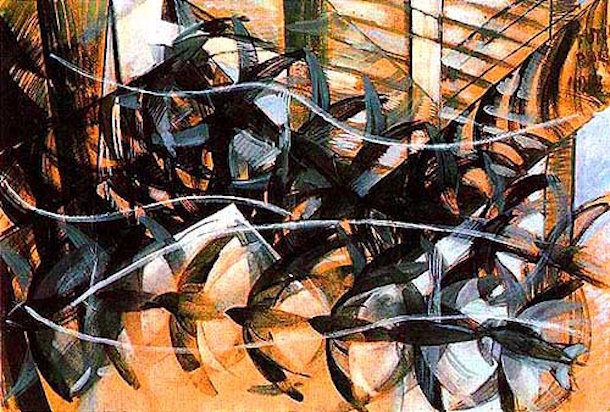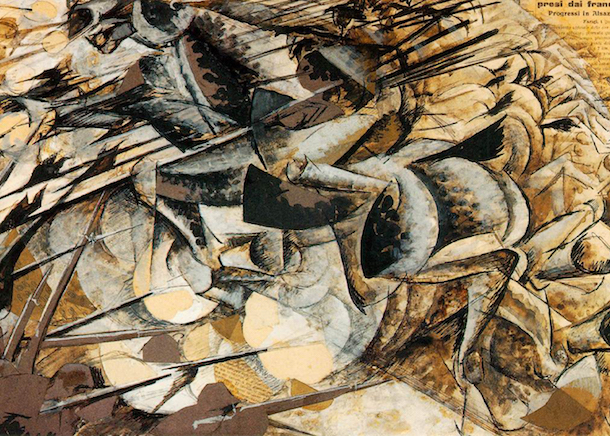Futurism
"We give plastic planes a plastic expansion in space, obtaining this feeling of something in perpetual motion which is peculiar to everything living."
Futurism is one of the most important Italian avant-garde movements of the 20th century. It was founded in Milan by the Italian poet Filippo Tommaso Marinetti who launched the Futurist Manifesto on 5 February 1909. Futurism was an artistic and social movement that celebrated advanced technology and urban modernity. Committed to the new, its members wished to destroy older forms of culture and demonstrate the beauty of modern life. They emphasized speed, technology, change, movement, violence, and the industrial city. Explore the Futurism Movement by starting from What is Futurism? and browse our curated list of artworks from futurism painters such as Umberto Boccioni, Carlo Carrà, Giacomo Balla and others.
History of Futurism
Futurism began its transformation of the Italian culture with the publication of the Futurist Manifesto by the Italian poet Filippo Tommaso Marinetti (1876-1944). The Manifesto was published in the Italian newspaper La Gazzetta dell'Emilia and the French paper Le Figaro, in February 1909. That moment saw the birth of the Futurists, a small group of radical Italian artists unified by the desire to employ modern, popular means of communication to spread its ideas.
Over the years, the group of artists published more manifestos: the Technical Manifesto of Futurist Painting, signed by Umberto Boccioni, Carlo Carra, Giacomo Balla and Gino Severini, and the Manifesto of Futurist Architecture, written by the Italian architect Antonio Sant'Elia. However all of them took the same principles and words from Marinetti’s general Manifesto, which summed up the spirit of Futurism, celebrating the "machine age", the triumph of technology over nature, and opposing traditions artistic background. The movement initially centered in Milan, but it spread quickly to Turin and Naples, and over subsequent years Marinetti vigorously promoted it abroad.
Although it was largely an Italian phenomenon, there were parallel movements in Russia, England and elsewhere. Many English as well as Russian Futurist artists such as Kazimir Malevich, Natalia Goncharova and David Burliuk were inspired by the Italian Futurism. Moreover, to some extent Futurism influenced some art movements as Art Deco, Constructivism, Surrealism, Dada and to a greater degree Precisionism, Rayonism and Vorticism.
Text by Cristina Motta

